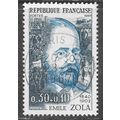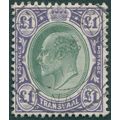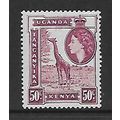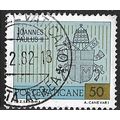Brixham, Devon - Harbour - lovely John Hinde postcard 1970s
- Condition : Used
- Dispatch : 2 Days
- Brand : None
- ID# : 122803812
- Quantity : 1 item
- Views : 1994
- Location : United Kingdom

- Seller : justthebook (+1703)
- Barcode : None
- Start : Wed 04 Dec 2013 06:02:53 (EDT)
- Close : Run Until Sold
- Remain : Run Until Sold
Checks/Cheques
 for 1 item(s) edit
for 1 item(s) edit
Shipping Calculator
More Listings from This Seller view all
Seller's Description
- Postcard
- Picture / Image: The Harbour, Brixham, Devon
- Publisher: Johne Hinde (2 DC 891) Photo: D. Noble
- Postally used: no
- Stamp: n/a
- Postmark(s): n/a
- Sent to: n/a
- Notes / condition:
John Hinde was an English photographer who set up John Hinde Ltd in Dublin, Ireland in the early 1960s. He produced most of the earlier cards himself before employing other photogaphers such as E.Nägele, E. Ludwig, D. Noble and other names who spent a long time getting just the right view, usually with people in the foreground. The prints were then artistically hand processed and manipulated in Italy (long before digital production) before being published. His company was also closely associated with Butlins and they produced many of their cards. The company’s cards have become popular with collectors in recent years due to exhibitions and being featured in books, particularly by photographer and postcard collector Martin Parr. They were influential in the development of commercial photography and postcard images and now are regarded as miniature works of art and social records in themselves, particularly those of the 1960s and 1970s.
Please ask if you need any other information and I will do the best I can to answer.
Image may be low res for illustrative purposes - if you need a higher definition image then please contact me and I may be able to send one.
------------------------------------------------
Postage & Packing:
UK (incl. IOM, CI & BFPO): 99p
Europe: £1.60
Rest of world (inc. USA etc): £2.75
No additional charges for more than one postcard. You can buy as many postcards from me as you like and you will just pay the fee above once. (If buying postcards with other things such as books, please contact or wait for invoice before paying).
Payment Methods:
UK - PayPal, Cheque (from UK bank) or postal order
Outside UK: PayPal ONLY (unless otherwise stated) please. NO non-UK currency checks or money orders (sorry).
NOTE: All postcards are sent in brand new stiffened envelopes which I have bought for the task. These are specially made to protect postcards and you may be able to re-use them. In addition there are other costs to sending so the above charge is not just for the stamp!
I will give a full refund if you are not fully satisfied with the postcard.
----------------------------------------------
Text from the free encyclopedia WIKIPEDIA may appear below to give a little background information (internal links may not work) :
*************
Brixham /'br?ks?m/ is a small fishing town and civil parish in the county of Devon, in the south-west of England. Brixham is at the southern end of Torbay, across the bay from Torquay, and is a fishing port. Fishing and tourism are its major industries. At the time of the 2001 census it had a population of 17,457.[1]
It is thought that the name 'Brixham' came from Brioc's village. 'Brioc' was an old English or Brythonic personal name and '-ham' is an ancient term for village.
The town is hilly and built around the harbour which remains in use as a dock for fishing trawlers. It has a focal tourist attraction in the replica of Sir Francis Drake's ship the Golden Hind that is permanently moored there.
In summer the Cowtown carnival is held, a reminder of when Brixham was two separate communities with only a marshy lane to connect them. Cowtown was the area on top of the hill where the farmers lived, while a mile away in the harbour was Fishtown where the seamen lived. Cowtown, the St Mary's Square area, is on the road leaving Brixham to the south west, in the direction of Kingswear, upon which stands a church built on the site of a Saxon original. The local Royal British Legion club is also here. The town holds a yearly pirate event which competes for the title of most pirates in one place and this draws visitors from far and wide.
Although there is evidence of Ice age inhabitants here[citation needed], and probable trading in the Bronze Age, the first evidence of a town comes from the Saxon times. It is possible that Saxon settlement originated by sea from Hampshire in the Sixth Century, or overland around the year 800.[2]
Brixham was called Briseham in the Domesday Book.[3] Its population then was 39.[4]
Brixham was part of the former Haytor Hundred. The population was 3,671 in 1801[citation needed] and 8,092 in 1901. In 1334, the town's value was assessed at one pound, twelve shillings and eightpence; by 1524, the valuation had risen to £24 and sixteen shillings. It is recorded as a borough from 1536, and a market is recorded from 1822.[5]
William Prince of Orange (afterwards King William III of Great Britain & Ireland) landed in Brixham, with his mainly Dutch army, on 5 November 1688 during the Glorious Revolution, and issued his famous declaration ""The Liberties of England and The Protestant Religion I Will Maintain"". Many local people still have Dutch surnames, being direct descendants of soldiers in that army. A road leading from the harbour up a steep hill, to where the Dutch made their camp, is still called Overgang, meaning 'passage' in Dutch.[6]
The coffin house reflects Brixham humour: it is coffin-shaped and when a father was asked for the hand in marriage of his daughter, he said he would 'see her in a coffin, before she wed'. The future son-in-law bought the coffin-shaped property, called it the Coffin House, and went back to the father and said 'Your wishes will be met, you will see your daughter in a coffin, the Coffin House'. Amazed by this, the father gave his blessing.[7]
The street names reflect the town's history. Pump Street is where the village pump stood. Monksbridge was a bridge built by the monks of Totnes Priory. Lichfield Drive was the route that the dead (from the Anglo-Saxon 'lich' meaning a corpse) were taken for burial at St Mary’s churchyard. Salutation Mews, near the church, dates from when England was Catholic, and the salutation was to the Virgin Mary. Similarly, Laywell Road recalls Our Lady’s Well. The first building seen when coming into Brixham from Paignton is the old white-boarded Toll House where all travellers had to pay a fee to keep the roads repaired.
The tower of All Saints' Church, founded in 1815, stands guard over the town. The composer of Abide With Me, Rev. Francis Lyte was a vicar at the church. He lived at Berry Head House, now a hotel, and when he was a very sick man, near to dying, he looked out from his garden as dusk fell over Torbay, and the words of that hymn came into his mind.
The main church is St. Mary's, about a mile from the sea. It is the third to have been on the site (which was an ancient Celtic burial ground). The original wooden Saxon church was replaced by a stone Norman church that was, in its turn, built over in about 1360. Many of the important townspeople are buried in the churchyard.
Many of Brixham's photogenic cottages above the harbour were originally inhabited by fishermen and their families. Near the harbour is the famous Coffin House mentioned earlier. Many of the dwellings towards Higher Brixham were built largely between the 1930s to 1970s. Several holiday camps were built in this area, for example Pontin's Wall Park and Dolphin. The Dolphin was one of the company's biggest camps. The camp closed in 1991 after fire destroyed the main entertainments building.
Brixham was served by the short Torbay and Brixham Railway from Churston. The line, opened in February 1868 to carry passengers and goods (mainly fish), was closed in May 1963 as a result of the Beeching Axe cuts. Although the former line to Brixham is deserted and overgrown, the branch line through nearby Churston is now maintained and operated as a heritage railway by a team of volunteers as the Paignton and Dartmouth Steam Railway.
The British Seaman’s Boys' Home was founded in 1863 by William Gibbs of Tyntesfield for the orphan sons of deceased British seamen. It was closed in 1988 after 125 years.[8]
Brixham is also notable for being the town where the fishing trawler was improved in the 19th century; the distinctive red sails of the Brixham trawlers were coated with the local red ochre for protection.
In the Middle Ages, Brixham was the largest fishing port in the south west of England. Known as the 'Mother of Deep-Sea Fisheries', its boats helped to establish the fishing industries of Hull, Grimsby and Lowestoft. In the 1890s, there were about 300 trawling vessels in Brixham, most individually owned. The trawlers can still be seen coming in and out of the harbour, followed by flocks of seagulls. The fish market is open to the public on two special days in the summer, when the finer points of catching and cooking fish are explained. The modern boats are diesel-driven, but several of the old sailing trawlers have been preserved.
Hundreds of ships have been wrecked on the rocks around the town. Brixham men have always known the dangers but even they were taken by surprise by a terrible storm that blew up on the night of 10 January 1866. The fishing boats only had sails then and could not get back into harbour because gale force winds and the high waves were against them. To make things worse, the beacon on the breakwater was swept away, and in the black darkness they could not determine their position. According to local legend, their wives brought everything they could carry, including furniture and bedding, to make a big bonfire on the quayside to guide their men home. Fifty vessels were wrecked and more than one hundred lives were lost in the storm; when dawn broke the wreckage stretched for nearly three miles up the coast.
Hearing of this tragedy, the citizens of Exeter gave money to set up what became the Royal National Lifeboat Institution's Brixham Lifeboat in 1866. Now known as Torbay Lifeboat Station, it operates a Severn-class all-weather lifeboat and a D-class (IB1) inshore lifeboat.[9] The crews have a history of bravery, with 52 awards for gallantry. The boathouse can be visited and memorials to the brave deeds seen; on special occasions visitors can go on board the boat. Two maroons (bangs) are the signal for the lifeboat to be launched.
Smuggling was more profitable than fishing, but if the men were caught, they were hanged. There are many legends about the local gangs and how they evaded the Revenue men. One humorous poem describes how a notorious local character, Bob Elliott (""Resurrection Bob""), could not run away because he had gout and hid in a coffin. Another villain was caught in possession but evaded capture by pretending to be the Devil, rising out of the morning mists. On another occasion when there was a cholera epidemic, some Brixham smugglers drove their cargo up from the beach in a hearse, accompanied by a bevy of supposed mourners following the cortege drawn by horses with muffled hooves.
The town's outer harbour is protected by a long breakwater, useful for sea angling. In winter this is a site for Purple Sandpiper birds.
To the south of Brixham, and sheltering the southern side of its harbour, lies the coastal headland of Berry Head with a lighthouse, Iron Age Fort and National Nature Reserve.
Warships have been seen in Torbay from the days of the Vikings up until 1944 when part of the D-Day fleet sailed from here. In 1588 Brixham watched Sir Francis Drake attacking the Spanish Armada after he had (so the legend goes) finished his game of bowls on Plymouth Hoe. Today in Brixham harbour there is a full-sized replica of the ship, the Golden Hind, in which Drake circumnavigated the globe; visitors can go on board.
For centuries, ships going down the English Channel have come into Torbay to seek refuge from the storms and to replenish food supplies. Sometimes these were merchants, taking cargoes to far away places and bringing back exotic goods and rare spices; sometimes they were carrying pilgrims, or gentlemen on the Grand Tour.
Since the days of Henry VIII Brixham has played a part in the defence of the nation. The headland known as Berry Head is now a National Nature Reserve, but it is also a military site where guns were once positioned to defend the naval ships that were re-victualling at Brixham. Twelve guns were put there during the War of American Independence, but were removed when peace came in 1783. Just ten years later, during a war with France, guns were again deployed around the town. The major position was at Berry Head, but this time fortifications were built to defend the gun positions. These can still be seen, and are now some of the best preserved Napoleonic forts in the country.
During the long series of wars against the French that began in 1689 and lasted until 1815, the Royal Navy came into Brixham to get supplies of fresh vegetables, beef and water. There might have been twenty or so of the big men-o'-war lying at anchor in Torbay, recovering from exploits of the sort described in the books about Hornblower, Bolitho or Jack Aubrey. On the harbourside towards the marina there is a grey stone building which today is the Coastguard headquarters; then, it was the King's Quay where His Majesty's vessels were provisioned. Local farmers brought vegetables to ward off scurvy, and cattle were slaughtered and their meat packed into barrels. The water came from a big reservoir situated near the crossroads in the middle of town; from there a pipeline carried it under the streets and under the harbour to the King's Quay.
Many of the well-known Admirals of the day visited Brixham. Not only Nelson, but also Lord St. Vincent, Cornwallis, Hood, Rodney and Hawke. There was also Earl Howe, who earned the nickname of Lord Torbay because he spent so much time ashore in Brixham. A notorious visitor was Napoleon Bonaparte, who, as a prisoner on HMS Bellerophon, spent several days off Brixham waiting to be taken to exile on St. Helena.
Battery Gardens have a military history leading back to the Napoleonic wars and the time of the Spanish Armada. The emplacements and features seen here today are those of the Second World War and are of national importance. The site, listed by English Heritage, is recognised as one of the best preserved of its kind in the UK. Of the 116 'Emergency Coastal Defence Batteries' set up in the UK in 1940, only seven remain intact.
During the Second World War, a ramp and piers were built on the breakwater, from which American servicemen left for the D-day landings.
The 1969 Fleet Review was held in Torbay, to present new Sovereign's Colours to the Royal Navy. When the Fleet was lit up at night ""The Bay gave the impression that it had been filled with a completely new town: an amazing sight!""
Apart from fishing, most of the other local industries were connected with stone. Limestone was once quarried and used to build the breakwater, for houses and roads, and was sent to Dagenham to make steel for Ford automobiles. It was also burnt in limekilns to reduce it to a powder which was spread on the land in other parts of Devon as an agricultural fertiliser. The old quarries and the limekilns can still be seen.
Another mineral found in Brixham is ochre. This gave the old fishing boats their ""Red Sails in the Sunset"", but the purpose was to protect the canvas from sea water. It was boiled in great caldrons, together with tar, tallow and oak bark. The latter ingredient gave its name to the barking yards which were places where the hot mixture was painted on to the sails, which were then hung up to dry. The ochre was also used to make a paint. This was invented in Brixham in about 1845 and was the first substance in the world that would stop cast iron from rusting. Other types of paint were made here as well, and the works were in existence until 1961.
There were iron mines at Brixham, and for a while they produced high quality ore but the last one closed in 1925. Most of the sites have been built over and there are now no remains of this once important industry.
type=printed postcards
theme=topographical: british
sub-theme=england
county/ country=devon
number of items=single
period=1945 - present
postage condition=unposted
Listing Information
| Listing Type | Gallery Listing |
| Listing ID# | 122803812 |
| Start Time | Wed 04 Dec 2013 06:02:53 (EDT) |
| Close Time | Run Until Sold |
| Starting Bid | Fixed Price (no bidding) |
| Item Condition | Used |
| Bids | 0 |
| Views | 1994 |
| Dispatch Time | 2 Days |
| Quantity | 1 |
| Location | United Kingdom |
| Auto Extend | No |



















